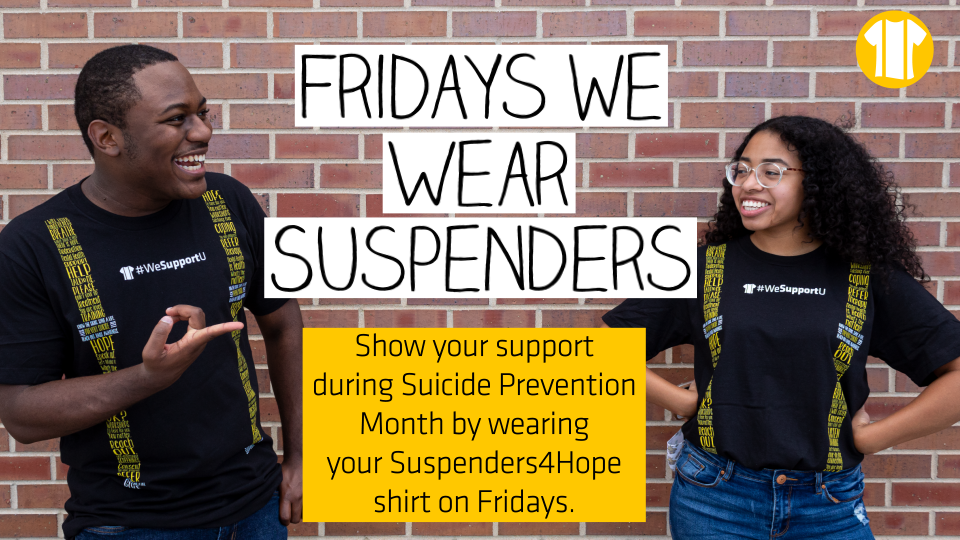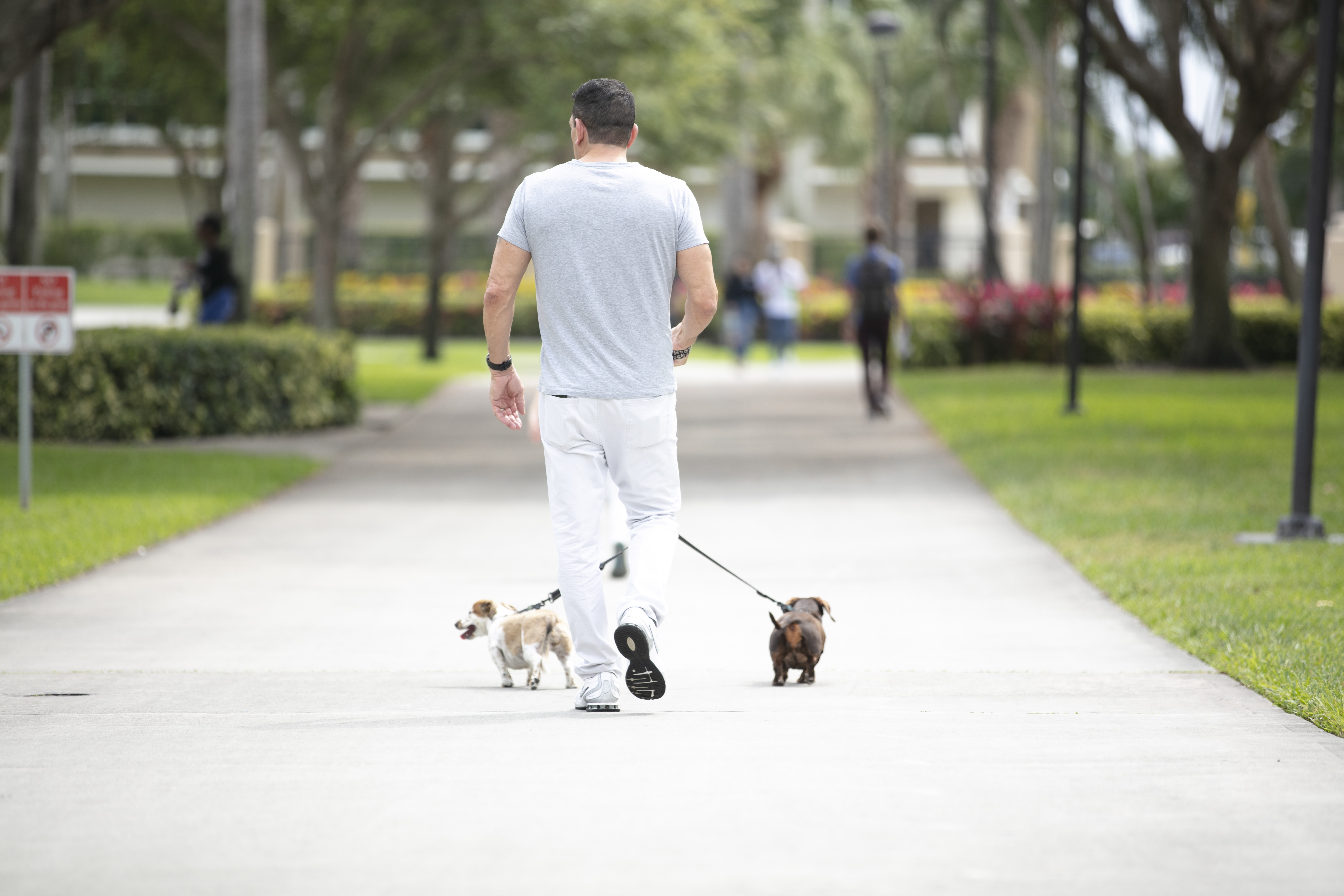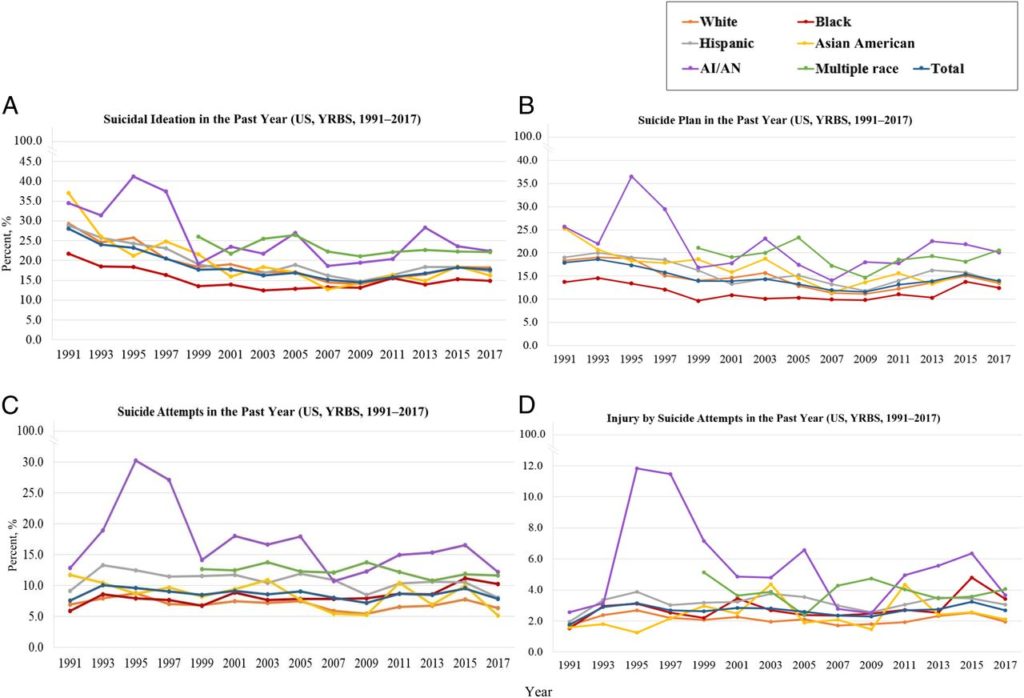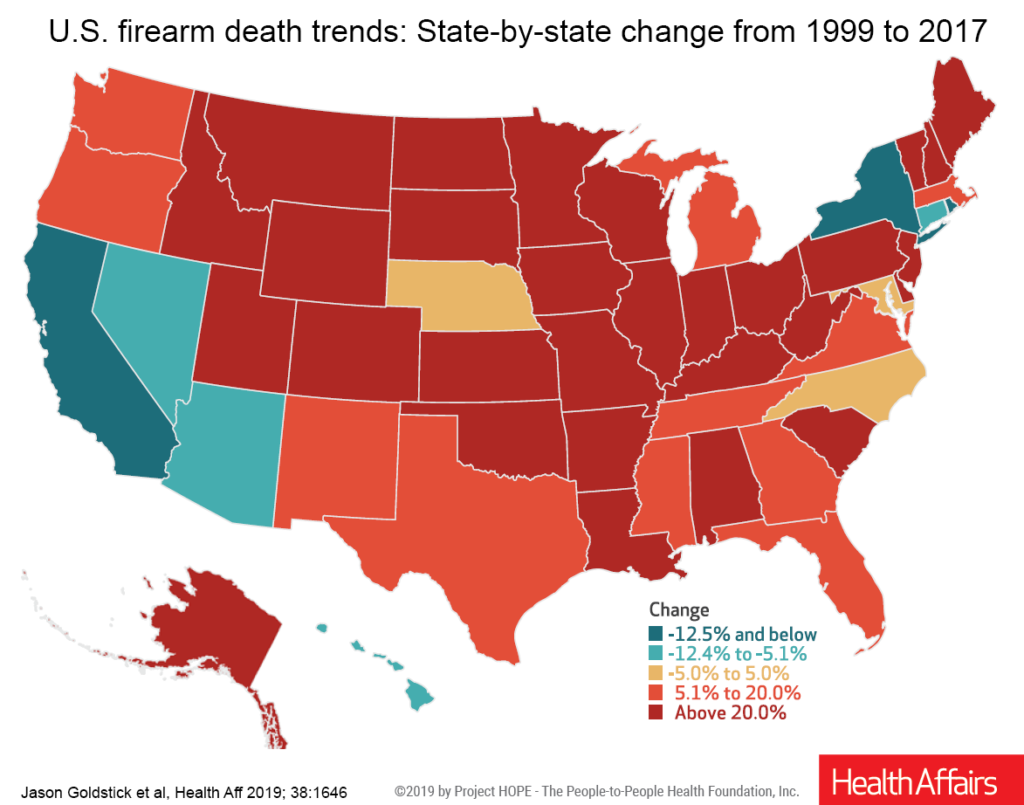People who purchase a firearm during the pandemic are more likely to be suicidal than other firearm owners, according to a Rutgers study.
Tag: Suicide
Surgeon General expects COVID-19 vaccine to be available by year’s end
In a wide-ranging talk with UCLA Health physicians, Wednesday, Oct. 28, United States Surgeon General Jerome Adams, MD, MPH, addressed the politicization of the pandemic and the means of containing the spread of COVID-19. He also offered hope that a vaccine for the virus will be available by year’s end.
McLean Hospital Sponsors National Stop a Suicide Today Town Hall
October 21 is National Stop a Suicide Today. In a collaboration between Stop a Suicide Today, the American Psychiatric Association, American Foundation for Suicide Prevention, and McLean Hospital, have scheduled a virtual Town Hall featuring talks by leading experts on the rising suicide rate, stigma, safety, the impact of COVID-19, and more.

Individual suicide risk can be dramatically altered by social ‘sameness,’ study finds
Similarities among individuals living in the same communities can dramatically change their risk of dying by suicide, according to a new study by Indiana University researchers.
Financial distress linked to suicide risk in people with ADHD
Attention deficit hyperactivity disorder is linked to higher levels of financial distress in adults – and a fourfold higher risk of suicide for those with the most debt, according to a large population study.

University of Kentucky Researchers Awarded NSF Grant to Engineer Better Mental Health Solutions
From the limited data currently available, Wilson, Hammer and Usher found that engineering students aren’t necessarily more likely to have a mental health concern, but they are significantly less likely to seek help than non-engineering college students. This treatment gap became the basis for their National Science Foundation (NSF) grant proposal titled, “Development of a Survey Instrument to Identify Mental Health Related Help-Seeking Beliefs in Engineering Students.”

The Medical Minute: Preventing suicide during COVID-19
People contemplating suicide want help. As the COVID-19 pandemic raises the overall level of anxiety, a Penn State Health expert explains how you can help people in crisis in this week’s Medical Minute.
Rutgers Scholar Available to Discuss Concerning Trends of Suicidal Behavior Before and During COVID-19
Rutgers psychologist Edward Selby is available to comment on the need for greater awareness and prevention of suicidal behavior during COVID-19 pandemic. “Suicidal behavior has been escalating in the United States over the last 20 years, and we saw a…

Preventing Firearm Suicide During the Pandemic and Social Unrest
During the pandemic and nationwide protests firearm purchases have soared — a concern for suicide prevention specialists, says a Rutgers expert

Wichita State takes suicide-prevention campaign national
As a way to promote suicide prevention, Wichita State University is expanding the #WeSupportU Suspenders4Hope campaign throughout the country in hopes of creating positive change in communities regarding mental health and suicide prevention.

Hagan research provides more information about suicide
Research by Cornell College Assistant Professor of Psychology Christopher Hagan provides one more piece of information to better understand suicide and why it’s on the rise across the country.

Gun Violence Research Center Director Available to Discuss Firearm Issues During 2020 Presidential Campaign
Michael Anestis, executive director of the New Jersey Gun Violence Research Center, is available to provide expert commentary on gun violence issues discussed during the 2020 presidential campaign. The Center is based at Rutgers University and one of the few…
Handgun Purchaser Licensing Laws are Associated with Lower Firearm Homicides, Suicides
State handgun purchaser licensing laws—which go beyond federal background checks by requiring a prospective buyer to apply for a license or permit from state or local law enforcement—appear to be highly effective at reducing firearm homicide and suicide rates.
Military Personnel at Risk of Suicide Store Firearms Unsafely
Military personnel who are at a greater risk of suicide are more likely to unsafely store firearms in unlocked cabinets where they can access them easily, according to a Rutgers researcher.

Vets Walking Pets: Strolls with Shelter Dogs May Reduce PTSD Symptoms in Military Veterans
About 6 to 8 million dogs end up in shelters in the U.S. each year. Researchers worked with two no-kill shelters on a study examining the effects of walking with a shelter dog on psychological and physiological stress indicators in military veterans. Results confirm the importance of the human-animal bond and provide evidence that walking with a shelter dog may affect psychological and physiological stress indicators in veterans – with particular potential benefits for those with an increase in PTSD symptom severity.
‘Remarkably High’ Rate of Suicide Among Elderly Patients After Hip Fracture
Older adults who suffer a hip fracture requiring surgery are at a higher risk of suicide, suggests a study in the June 17, 2020 issue of The Journal of Bone & Joint Surgery. The journal is published in the Lippincott portfolio in partnership with Wolters Kluwer.

Pets can protect against suicide in older people
It’s a sad fact that suicide rates among people over 60 are the highest of any age group in Australia, but a new study published today from the University of South Australia has found an unexpected saviour – pets.
Rifles and Shotguns Used More Often in Youth and Rural Suicides
The public has long thought that handguns are more responsible for human deaths, including suicides, than long guns such as rifles and shotguns, which have been believed to be more commonly used for hunting or protection from wild animals. But now, in an analysis of data from 16 years of gun suicides in Maryland, Johns Hopkins Medicine researchers found that long guns were used more often in suicides by kids and teens than by adults, and were more commonly used in suicide by people in rural counties.
Family dynamics may influence suicidal thoughts in children
Research from Washington University in St. Louis shows a nontrivial rate of children as young as 9- and 10- years old are thinking about suicide. How their families interact – or don’t – may play a role.

National Study Confirms Nurses at Higher Risk of Suicide than General Population
In the first national study of its size, researchers at UC San Diego have found that nurses are at higher risk of suicide than the general population. Results were published in the February edition of WORLDviews on Evidence Based-Nursing.
Past trauma exposure, major depression risk factors for suicidal thoughts in deployed Soldiers
Lifetime history of exposure to a traumatic event and self-reported lifetime and current depression are predictive of recent suicide ideation in deployed soldiers, according to a new JAMA Network Open study published January 29, 2020. Researchers suggest that attention to deployment experiences that increase suicide ideation in soldiers with past trauma and major depressive disorder can assist clinicians and leadership in identifying and treating Soldiers at increased risk for suicide.

More Youth Suicide Found in Poor Communities Across U.S.
A study led by Jennifer Hoffmann, MD, from Ann & Robert H. Lurie Children’s Hospital of Chicago, found that higher county-level poverty is associated with increased youth suicide rates among children 5-19 years old in the United States in 2007-2016. Children and adolescents from counties where 20 percent or more of the population lives below the federal poverty level were 37 percent more likely to die by suicide, compared to communities with the lowest poverty concentration. Youth suicide by firearms was 87 percent more likely in areas with the highest poverty levels. Findings were published in JAMA Pediatrics.
Training middle-school educators to identify suicide warning signs
New research examined the impact of virtual training on the mental-health and suicide-prevention skills of more than 33,000 middle-school educators. The researchers found, overwhelmingly, that those who completed the training had “higher levels of preparedness” in identifying suicide warning signs than participants at the pre-test evaluation.
Concussions in high school athletes may be a risk factor for suicide
Concussion, the most common form of traumatic brain injury, has been linked to an increased risk of depression and suicide in adults. Now new research published by The University of Texas Health Science Center at Houston (UTHealth) suggests high school students with a history of sports-related concussions might be at an increased risk for suicide completion.
19 Novembre Journée international des hommes
19 Novembre Journée international des hommes ! Saviez-vous que quatre suicides sur cinq au Canada sont commis par des hommes? Ou qu’un garçon sur 20 sera victime d’abus sexuel au cours de sa vie ? Des enjeux comme la santé mentale,…
Busting the Gender-Bias Myths Surrounding Men’s Health
Busting the Gender-Bias Myths Surrounding Men’s Health Did you know that men account for four out of five deaths by suicide in Canada[1]? Or that one in twenty boys will experience sexual abuse[2]? Issues such as mental health, fertility, and…
Study calculates links between prescription medications and risk for suicide
A review of 922 prescription medications taken by almost 150 million people over an 11-year period shows that just 10 of these drugs were associated with an increased rate of suicide attempts.

Suicide attempts among black adolescents on the rise
While suicide attempts decreased overall among U.S. adolescents between 1991 and 2017, they increased by 73% among black adolescents, finds a new study from the Brown School at Washington University in St. Louis.“The rise in suicide rates among black youth can most likely be traced back to an internalization of issues around structural racism in America, along with a lack of coping mechanisms and lack of investment in mental health services in black communities,” said Sean Joe, the Benjamin E.

STUDY: SELF-REPORTED SUICIDE ATTEMPTS RISING IN BLACK TEENS AS OTHER GROUPS DECLINE
Study in Pediatrics finds a rise in self-reported suicide attempts among Black teens, as well as an accelerating rate in Black female teens.

University of Utah researchers publish article posing powerful moral conflict between physician aid-in-dying and suicide prevention
Researchers at the University of Utah have published an article in the October edition of the American Journal of Bioethics posing the powerful moral conflict between physician aid-in-dying and suicide prevention. In the article, Brent Kious, assistant professor of psychiatry, and Margaret Battin, distinguished professor of philosophy, ask the question, if the practice of PAD for terminal illness is permissible, then should it be justifiable for those who suffer from psychiatric illness, since the suffering can be equally severe?

Study: U.S. firearm death rate rose sharply in recent years across most states & demographic groups
The rate at which Americans died from firearm injuries increased sharply starting in 2015, a new study shows. The change occurred to varying degrees across different states, types of firearm death such as homicide and suicide, and demographics. In all, the US saw a 14% rise in the rate of firearm deaths from 2015 through 2017, compared with the rate seen in the years 1999 through 2014.
Study: More behavioral health care linked to small drop in gun-related suicides
An increase in behavioral health providers is associated with a slight decrease in gun-related suicides, but the difference is small and points to a need to tackle gun violence in other ways, according to the authors of a new study.

The Medical Minute: Don’t stay silent on suicide
Suicide can be difficult to talk about due to the cultural stigma surrounding it and the devastating and lasting impact it has on people, families and communities. But it’s important to do so.

ORNL-VA Collaboration Targets Veteran Suicide Epidemic
In collaboration with the Department of Veterans Affairs, a team at Oak Ridge National Laboratory has expanded a VA-developed predictive computing model to identify veterans at risk of suicide and sped it up to run 300 times faster, a gain that could profoundly affect the VA’s ability to reach susceptible veterans quickly.

EXPERT PITCH: Censorship of suicide scenes in entertainment media may do more harm than good
Censoring teen suicides in entertainment media like “13 Reasons Why” may do more harm than good, according to West Virginia University’s Elizabeth Cohen, an associate professor of communication studies. Cohen says the well-publicized study that linked the show to a…

Depression, suicides are occupational hazards, doctor writes
Medical schools’ efforts to reduce depression and burnout among trainees have focused on building their resilience. But putting this onus on clinicians has allowed schools to ignore the taxing training environments and policies that contribute to mental illness and suicide, a doctor’s commentary says.